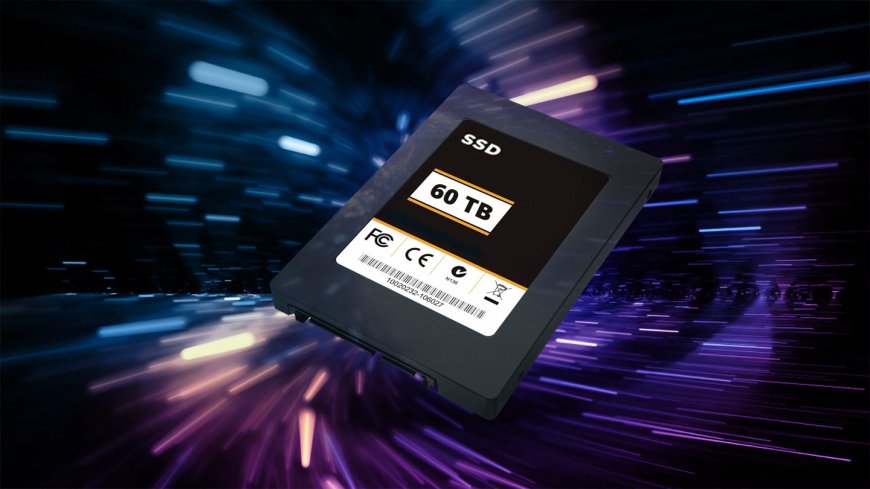Navigating SSD Choices During Flash Sales
When flash sales like Black Friday or holiday deals hit the market, the landscape of buying an SSD (Solid State Drive) changes dramatically. Standard recommendations based on regular pricing may no longer apply as lesser-known SSD models often become attractive due to significant discounts. This guide aims to equip you with the knowledge to make informed decisions about SSDs during such sales, addressing common questions and considerations.

Understanding SSD Interfaces: NVMe vs. SATA
Speed and Compatibility Factors
The interface of an SSD, whether NVMe or SATA, is crucial as it influences not only the transfer speeds but also the compatibility with your system. Traditional SATA SSDs, similar in form to 2.5" hard drives, have been standard in laptops for years. However, SATA 3.0 has a speed limitation of about 560MB/s.
Also check Intel CEO Reflects on Nvidia's AI Dominance and Intel's Missed Opportunities
The Rise of NVMe
In contrast, NVMe interfaces have largely replaced SATA in home computers. NVMe connects directly to the CPU or through the motherboard's chipset using PCIe lanes, offering significantly faster speeds. When choosing an SSD, it’s important to check your motherboard's compatibility and whether using an NVMe or SATA connector will disable other needed connectors.
Top SATA and NVMe Picks
For SATA drives, the Crucial MX500 represents a high-quality option. If your system supports NVMe, the Crucial P5 Plus is an excellent alternative, providing superior performance at a comparable price per GB.
M.2 SSD Form Factors: 2230 vs. 2280
Understanding M.2 and PCIe Lanes
Most modern NVMe and some SATA drives use the M.2 form factor, supporting up to four PCIe lanes for NVMe SSDs. This enables significantly higher transfer speeds – up to 3,500 MB/s for PCIe 3.0 drives and up to 7,000 MB/s for PCIe 4.0 drives, depending on your CPU and motherboard's support for these interfaces. The upcoming PCIe 5.0 standard promises even higher speeds, although no consumer drives have reached these limits yet.
Compatibility and Notching
Most M.2 drives are notched according to the M key, compatible with up to four PCIe lanes and SATA. Older motherboards may have M.2 slots supporting the B key, which only accommodate two PCIe lanes besides SATA. For broader compatibility, many SSDs that use SATA or two PCIe lanes are double-notched for both M and B keys.
Key Considerations When Choosing an SSD on Sale
Assessing SSD Types and Your Needs
When faced with a flash sale, understanding the basic differences between SSD types is essential. Consider factors like the SSD interface, form factor, and compatibility with your system. It’s crucial to evaluate whether the discounted SSD meets your specific requirements in terms of speed, storage capacity, and physical compatibility.
Common Questions and Concerns
- QLC vs. TLC: Quality of cells can vary, with QLC (Quad-Level Cell) being less durable but more affordable than TLC (Triple-Level Cell). Assess your usage patterns to decide which is suitable.
- Need for DRAM: DRAM in SSDs can enhance performance, particularly in write-intensive tasks. However, for basic use, DRAM-less SSDs might suffice.
- Impact of Capacity on Performance: Larger SSDs often perform better due to increased parallelism in accessing data. Consider balancing capacity and performance based on your needs.
Conclusion: Making an Informed SSD Choice During Flash Sales
Evaluating Deals and Performance
Flash sales present unique opportunities to purchase SSDs at significant discounts. However, it’s important to not just focus on the price but also consider the performance, capacity, and compatibility of the SSD with your system. Evaluate the deals against your personal or professional requirements, and choose an SSD that offers the best balance between price and performance.
Staying Informed for Future Upgrades
As SSD technology continues to evolve, staying informed about the latest developments and standards will help you make better choices, not only during sales but also for future upgrades. Understanding the nuances of SSD technology, from interfaces to form factors, ensures that you can take full advantage of these flash sale opportunities.


































